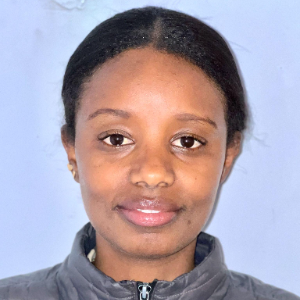Abstract:
Background: Transverse congenital limb deficiency is a common limb deficiency where there is normal limb development until a certain point beyond which no anatomical structure exists. Typically, this presents as an isolated and spontaneous abnormality as a result of arrest during limb bud development. Transverse bilateral deficiency in both upper and lower limbs is not well described.
Case presentation: This report presents a 6 years and a 5 month old two female siblings from Ethiopia with similar transverse bilateral upper and lower limb deficiencies. The sisters were born from the same parents and have similar phenotypic presentations. Both of them do not have other syndromic features or systemic manifestations. The siblings are currently on follow-up and they are receiving assistance from specialist orthotists, who are working to improve walking and also providing adaptive equipment to facilitate self-care and feeding. These sisters are the only children born to these parents. However, the couple recently conceived a third child, who was terminated at 18 weeks and 4 days after intrauterine ultrasound indicated the presence of similar abnormalities. In addition, the father has two sons from a previous marriage, both of whom do not have any known abnormalities. The parents are unaware of any other family members affected in the same way.
Conclusion: These sisters with the same biological parents present with the absence of hands and feet without any systemic manifestations. Even though our initial diagnosis for these patients was archeiropodia, their phenotypic manifestations are significantly different than all other patients with the condition. This suggests that the genetic cause of their condition could also be different. Therefore, we suspect that this could be a very rare genetic disorder that has not yet been described in the world. Thus, it is important to conduct further research on this family to identify the genetic cause of the disease, which can also enhance our knowledge of limb development genes.
Audience Takeaway: Archeiropoda (Gr. a = absence; cheir, cheiros = hand; pous, podos = foot) is a rare disorder that describes the absence of the distal extremities. Most individuals with the condition have bilateral deficiency beyond the distal epiphysis of the humerus and distal portion of the tibial diaphysis. Archeiropodia has an autosomal recessive inheritance pattern. It was first described in 1929 in Brazil, with half of a family of twelve children affected (Freire-Maia 1975; Kruger et al. 1994). Studies estimate that the prevalence of this condition in Brazil is approximately 1 in 250,000 births. Genetic analysis of five families with archeiropodia revealed a common mutation in C7orf2, the human orthologue of mouse Lmbr1 gene (Ianakiev et al. 2001). This mutation was observed both at genomic DNA and mRNA level (Ianakiev et al. 2001). This mutation leads to a premature stop codon, producing a transcript lacking exon 4. In heterozygotes, this mutation doesn’t result in phenotypic manifestations of limb disorder. This condition has only been described in families originating from South America, with cases outside Brazil reported in Argentina and Puerto Rico. (Kruger and Kumar 1994)
The sisters described in this case have different phenotypial presentations than described in literature. In addition, these siblings do not have associated systemic disorders and are meeting proper developmental milestones. As such a disorder is novel, it’s important to conduct further investigations to identify which genes are involved as it can enhance our understanding of the molecular mechanism of limb development in humans. Further genetic analysis of the family might elucidate how this condition emerged in the continent of Africa.




